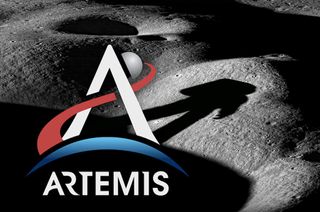National Geographic's 'Return to the Moon' to chronicle NASA's Artemis astronauts and lunar missions
It spans NASA's push to land the first woman and next man on the moon by 2024.

National Geographic has announced an ambitious new series that will chronicle NASA's attempt to send the next man and first woman to the moon.
The new show, aptly titled "Return To The Moon", will follow NASA astronauts, engineers, and scientists as they work on the space agency’s Artemis program. Named after the Greek goddess of the moon and twin sister to Apollo, the name of the first NASA mission to the moon over 50 years ago, the Artemis program aims to send astronauts back on the moon by 2024 with the ultimate goal of establishing a permanent lunar base and then aiming for trips to Mars.
One other goal of the Artemis mission is to put the first woman on the moon. Fifty years ago when Neil Armstrong, Buzz Aldrin, and Michael Collins traveled to the moon, there were no women in the U.S. space program. Now, 16 of NASA's 47 astronauts are women and the space agency plans to send at least one of these women to the moon in 2024.
On Wednesday, NASA announced the 18 Artemis astronauts who will be training for trips to the moon. Nine of them are women.
Video: Vice President Mike Pence announces NASA's Artemis astronauts
Related: NASA unveils the 1st 'Artemis Team' astronauts for moon missions
The new National Geographic show will follow the latest generation of astronauts and "document their efforts, ambitions, sacrifices and breakthrough first steps," according to NatGeo's statement about the show. In a long-term collaboration with NASA, the show will give viewers an all-access pass to the journey to the moon.
In addition to the show itself, National Geographic will cover the story of the Artemis mission over all of its print and digital storytelling platforms, including in the magazine and on podcasts. The magazine will follow the model of National Geographic’s coverage from the first mission to the moon and photograph and report on major milestones from the lab and the field. When the mission is finally off the ground, National Geographic will release a special edition of the magazine devoted to Artemis.
Get the Space.com Newsletter
Breaking space news, the latest updates on rocket launches, skywatching events and more!

"Return To The Moon" will follow the Artemis mission through Artemis 1's orbit of the moon in 2021, Artemis 2's crewed flight around the moon and finally Artemis 3's lunar landings and return to Earth, according to the statement. The showrunners plan to give viewers not only the details that lead to launch, but an insight into personal moments with potential interviews with the astronauts’ loved ones.
“Our focus will be on the intimate and often high-stakes emotional moments that no-one else will capture as the spotlight of the world falls on this pioneering endeavor," Simon and Jonathan Chinn, producers of "Return To The Moon," said in NatGeo's statement.
National Geographic hasn’t yet announced when "Return To The Moon" will start airing. In the meantime, you can follow Space.com's coverage of the Artemis Program here.
Follow Kasandra Brabaw on Twitter @KassieBrabaw. Follow us on Twitter @Spacedotcom and on Facebook. `
Join our Space Forums to keep talking space on the latest missions, night sky and more! And if you have a news tip, correction or comment, let us know at: community@space.com.

Kasandra Brabaw is a freelance science writer who covers space, health, and psychology. She's been writing for Space.com since 2014, covering NASA events, sci-fi entertainment, and space news. In addition to Space.com, Kasandra has written for Prevention, Women's Health, SELF, and other health publications. She has also worked with academics to edit books written for popular audiences.
